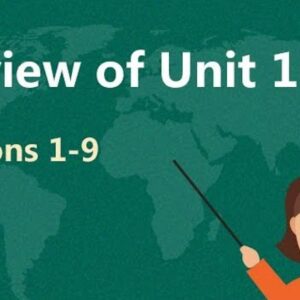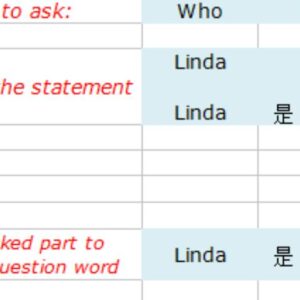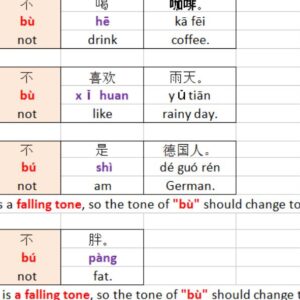What is Pinyin?
Pinyin is the phonetic system of Chinese language. It is the most widely-used system of writing Mandarin Chinese that uses the Latin alphabet. Most importantly, it’s a great tool to help you learn the accurate pronunciation of Mandarin words and input Chinese characters on your computer or smartphone.
| Like English phonetic symbols, Pinyin also uses the modern alphabet to build its system. However, you need to learn how to read Pinyin, as Mandarin contains some sounds that do NOT exist in English phonetic symbols. Have a look at all of our videos, listen to the voices in Real Chinese and our tones to hear how native speakers pronounce the sounds.
Don’t worry if you don’t get it right first time. Learning Pinyin needs a fair bit of practice. As we all know, practice makes perfect. |
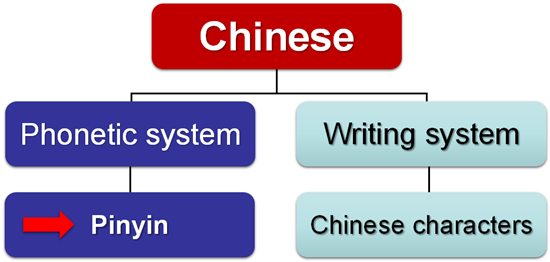 |
Why was Pinyin created and is important to learn nowadays?
| Back in the 1950s, Chinese scholars realized that it is important to standardize the pronunciation of Chinese characters, because there are 56 ethnic groups speaking different dialects all across China. So Pinyin was created to help people pronounce Chineese characters in a united way.
Nowadays, this standardization of Pinyin also makes it much easier for Chinese learners around the world to read Mandarin Chinese. |
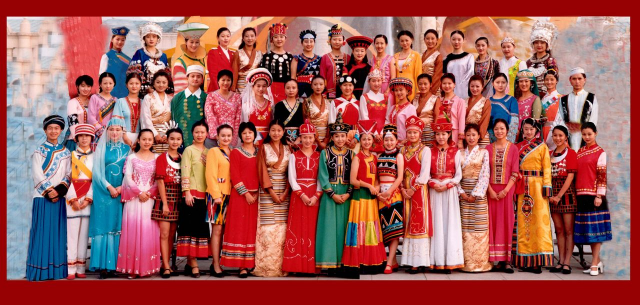 |
| As Chinese characters you see in your daily life, they are made of many strokes. For example. Here is a word “你好”, which means “Hello” in English. But only by its strokes, you can’t tell how to pronounce it unless you have learned Pinyin. That’s why Pinyin is important to learn for Chinese learners. | 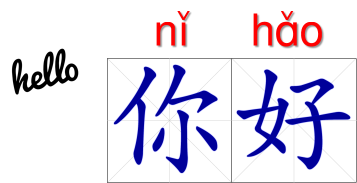 |
What does Pinyin consist of? The Components of Pinyin
 |
|
| Let’s take a word “妈” for example, this word is pronounced “mā” in Pinyin, which means mother in English. | Here, the first letter “m”, which is pronounced “mo” in pinyin, is called Initial; And behind it is an “a” , which is pronounced “a” in Pinyin, and we call it Final; What about the accent on the top of “a”? This accent is called Tone in Pinyin. |
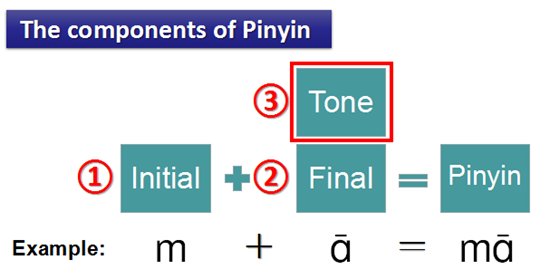 |
|
| So basically Pinyin is made of three parts, which are ①initial, ②final and ③tone. The initials and finals may not be difficult for you as we’ve got the similar letters in English. We only need to know how to pronounce each letter in Chinese pronunciation/Pinyin system. However, Pinyin tones may be a little bit new to you. | |
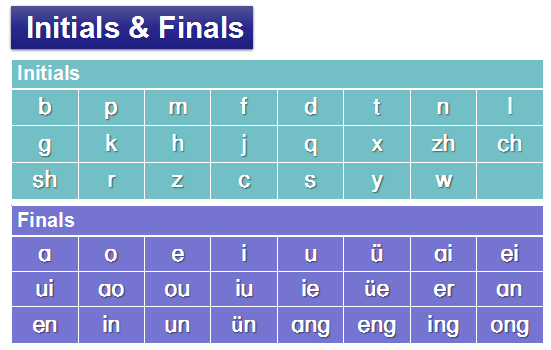 |
|
| It is important to remember that although pinyin uses the same letters as European languages, the sounds those letters represent are the sounds of Mandarin Chinese. Thus some letters may not make the sounds you expect. It is important that you pay close attention to how each letter of pinyin is pronounced, as you cannot read pinyin as if it were English.
→ See details Chinese Initials |
|
Chinese vowels
→ See details Chinese vowels
Tones of Pinyin
Chinese is a tonal language, i.e., tones change the meanings of words. Mandarin Chinese is normally said to have just four tones. However, there is also a neutral tone which does not occur very often but is just as important. The tone is indicated by a tone mark placed on top of the vowel. It should be placed on the letter a or e, on the letter o in the ou final, and on the last vowel in all other cases. The neutral tone is indicated by the lack of tone mark.


